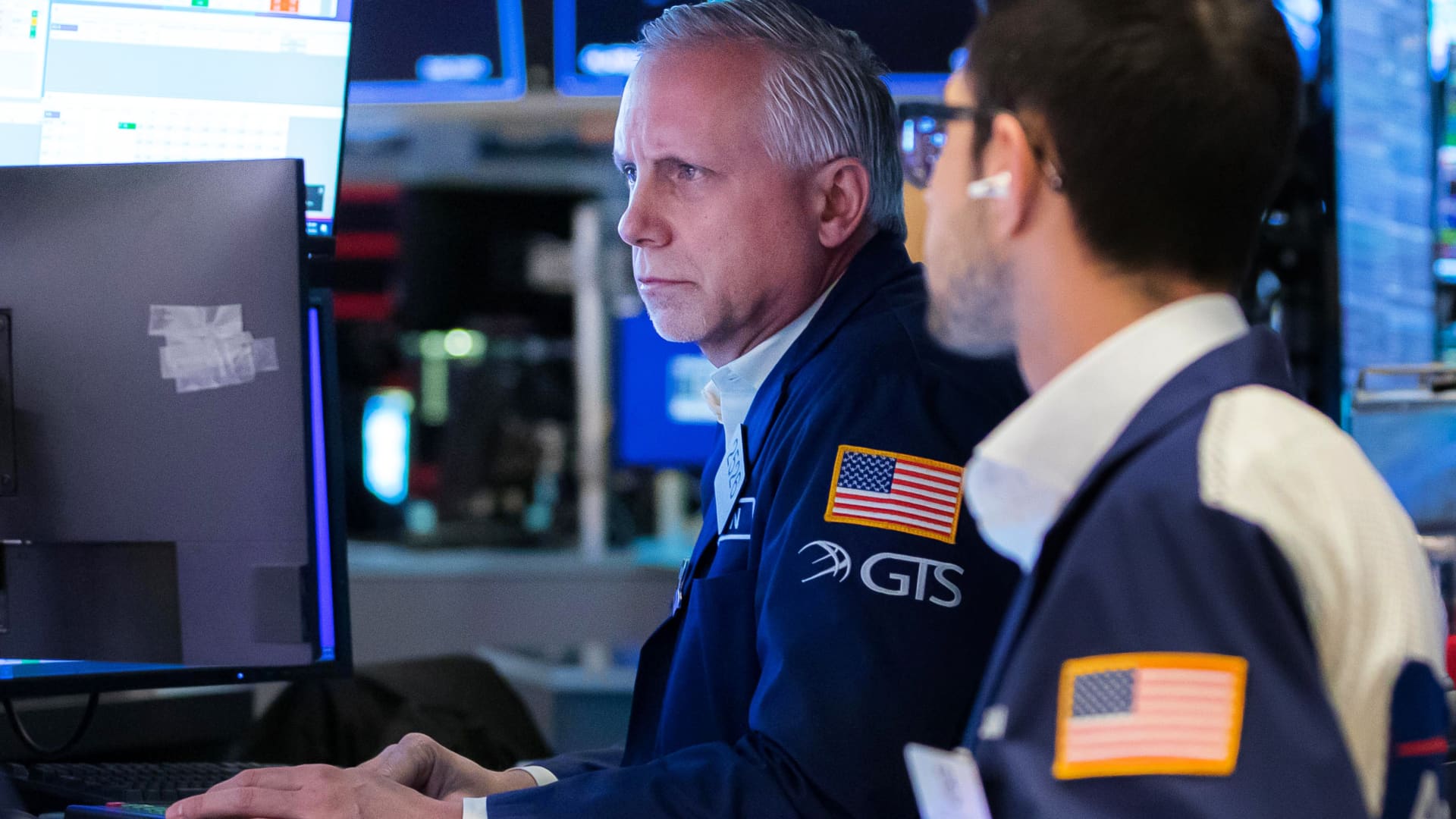U.S. equities futures moved lower Wednesday after stocks extended their rally in the previous session, even as fears of an inverted yield curve sparked recession concerns and investors continued watching developments play out in Ukraine.
Futures tied to the Dow Jones Industrial Average slipped by 156 points, or 0.4%. S&P 500 futures fell 0.5%, and Nasdaq 100 futures lost 0.6%.
Russia said late Tuesday it would reduce its military presence in some parts of Ukraine, but several countries — including the U.S. and U.K. — remain skeptical over Moscow’s pledge. Meanwhile, Russian attacks on Ukraine continued Wednesday.
Crude prices, which have soared since the war began, climbed more than 2% to $106.57 per barrel on Wednesday. Germany warned of potential rationing of natural gas due to disputes with Russia.
Shares of Apple, which have risen for 11 consecutive sessions, were down slightly in premarket trading. Shares of Procter & Gamble dipped 1.4% following a downgrade from JPMorgan.
Wall Street is coming off a strong session, with the Dow and S&P 500 positing their fourth straight day of gains on Tuesday. The Nasdaq Composite climbed 1.8% in the previous session and now sits less than 10% from its record.
“The market’s now up almost 10% in the last 10 days, so we’ve had a pretty incredible rally in a very short time with not a whole lot of news change except that we actually have more rate hikes priced into the market,” Stephanie Lang, chief investment officer at Homrich Berg, told CNBC.
“This has been a nice ride,” she added. “But I wouldn’t get too comfortable for the rest of this year, because I think we’re going to continue to see a lot of volatility.”
Several retail stocks were under pressure in premarket trading after disappointing quarterly reports, including Five Below and Chewy.
On the positive side, shares of chipmaker Micron rose 4% after the company beat estimates on the top and bottom lines. Apparel stock Lululemon jumped 7% after issuing upbeat guidance and announcing a share buyback program.
All eyes were on the bond market Tuesday as the U.S. 5-year and 30-year Treasury yields inverted Monday for the first time since 2016. Historically, this inversion has been a sign of a coming recession, though it hasn’t been a good indicator of when the recession would come. Still, investors largely shrugged off the event.
On Tuesday, the main yield spread traders watch, that between the 2-year and the 10-year rate, came close to inverting but stayed positive. On Wednesday, the spread climbed back to about 7 basis points.
“The big talk right now is that at any given point in time, recession can be on the horizon,” Lang said. “Typically, you won’t see a recession for an average of 20 months once a yield curve inverts. Our antennas are up that recession risk is heightened; that doesn’t necessarily mean that there’ll be one this year, though next year is more of a concern for us.”
Investors will be watching economic data scheduled to be released Wednesday, including economic growth and home sales data. The ADP payrolls report said private firms added 455,000 jobs in March. Economists surveyed by Dow Jones were expected 450,000.
Esther George, president of the Federal Reserve Bank of Kansas City, will speak to the Economic Club of New York.
